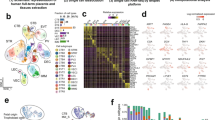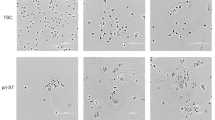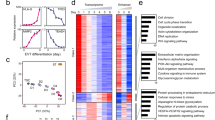Abstract
STUDIES on conditions resulting in the premature termination of pregnancy indicate that the male conceptus may be less well adapted to survive in the maternal host than the female. Sex chromatin determinations1 carried out on chorionic villi of spontaneously aborted foetuses have shown that the majority of foetuses lost are male2,3. Moreover, more male foetuses than female seem to be involved in premature termination as a result of antepartum haemorrhage4. Because the trophoblast is the foetal tissue most intimately associated with the maternal host during pregnancy, we decided to examine the influence of foetal sex on the ability of trophoblast cells to survive as allografts.
This is a preview of subscription content, access via your institution
Access options
Subscribe to this journal
Receive 51 print issues and online access
$199.00 per year
only $3.90 per issue
Buy this article
- Purchase on SpringerLink
- Instant access to full article PDF
Prices may be subject to local taxes which are calculated during checkout
Similar content being viewed by others
References
Barr, M. L., and Bertram, E. G., Nature, 163, 676 (1949).
Hathout, H. M., J. Obstet. Gynaecol. Brit. Comm., 70, 859 (1963).
Seer, D. M., and Ismajovich, B., Amer. J. Obstet. Gynecol., 87, 63 (1963).
Rhodes, P., Lancet, ii, 718 (1965).
Tominaga, T., and Page, E. W., Amer. J. Obstet. Gynecol., 96, 305 (1966).
Loke, Y. W., and Borland, R., Brit. J. Cancer, 23, 554 (1969).
Author information
Authors and Affiliations
Rights and permissions
About this article
Cite this article
BORLAND, R., LOKE, Y. & OLDERSHAW, P. Sex Difference in Trophoblast Behaviour on Transplantation. Nature 228, 572 (1970). https://doi.org/10.1038/228572a0
Received:
Revised:
Issue date:
DOI: https://doi.org/10.1038/228572a0



